With Ken’s health steadily improving, and no further need to stay in the Moab area, we were happy to head east into Colorado in search of new adventures. The main focus of this visit would be Mesa Verde National Park and the surrounding areas of archaeological interest. The Four Corners region and particularly Southwestern Colorado was densely populated by Ancestral Pueblo peoples for around a thousand years, and they left behind numerous elaborate city sites that have been well preserved in the dry high desert environment.
Even though our drive from Monticello to Cortez, Colorado covered just 60 miles, it felt like we were transported to another world. Gone were the stubby red sandstone formations and endless stretches of scrubby sagebrush, replaced by a verdant valley surrounded by rugged snow-capped peaks. After spending most of our time since mid-December in a desert environment, it was a huge relief to be greeted by this explosion of green trees, shrubs, and grasses.
When It Rains, It Pours
When we initially mapped out our visit to Cortez, we planned to stay in the campground at Mesa Verde National Park, but a few things changed our mind. The weather forecast called for unusually terrible weather. While on average in late May Cortez experiences sunny days with highs in the 70s, the forecast during our visit was for several continuous days of rain and snow, with temperatures barely reaching 50. Staying in the non-hookup national park campground would mean trying to eke out some power from our solar panels — and likely pulling out the generator as well, given the forecast for multiple cloudy days with lots of precipitation. Also, reviews on the campground suggested it was a bit of a dump, and definitely not worth the unusually high (for a national park) price of $33 per night for a non-hookup site.
As a result, we made a last-minute decision to stay at a private RV park in Cortez (Sundance RV Park), and were lucky to get a spot for 8 nights at one located in the heart of downtown. After several continuous weeks of staying in private RV parks with full hookups, are we getting soft? Maybe. But our decision turned out to be extremely helpful in several respects.
Thanks to our very short relocation we arrived in town too early to check into the RV park, so we headed over to Walmart and did a little shopping. Between seeing all the greenery, and having a Walmart in town with a *normal beer section*, I was pretty giddy. See this completely scientific comparison of grocery store selections of Utah vs. Colorado beer for an illustration:
But as soon as we tried to get parked at the RV park, we ran into a mechanical problem — namely, we were unable to lift the trailer off the hitch. Our electric jack was grinding away, but couldn’t generate enough power to perform its function. Our attempts to lift the trailer using the manual function on the jack were also a total bust. This meant we had no way to get the truck loose from the trailer, and if we wanted to drive anywhere we would have to bring the whole house with us. This situation had to be remedied immediately.
Since we were in town — at an RV park with wifi no less — we were able to hop onto the internet and have our friend Google bring us up to speed. Why might our electric jack have failed? Apparently, it was undersized for our application. Our application being towing our trailer. You see, the very fine print on the product information for our jack says that, while the 3,000 lb jack that came installed on our trailer is perfectly adequate for lifting the trailer itself (hitch weight: under 1,000 pounds when fully loaded), it is not really enough for attaching weight distribution hitches. Here’s how we could have known this important fact:
Attaching weight distribution hitches requires lifting both the trailer and the rear of the truck, popping on the sway bars, and then bringing the whole assembly down until part of the trailer weight is resting on those bars. Apparently a jack rated for 3,000 lb isn’t quite enough, but a 4,000 lb jack would do it. Of course, literally the only way to safely tow our 7,500 lb trailer is by using a weight distributing hitch, which is why virtually every Airstream owner in the country has some sort of weight distribution hitching system…. which apparently overtaxes the factory standard electric jack every time the owner hitches up. No doubt that’s why I started having trouble back in Monticello, but by the time we reached Cortez the jack had given up completely. If only we had studied the user manual for the jack in excruciating detail. Then we might have realized in advance that Airstream totally cheaped out. The retail cost difference between the 3,000 and 4,000 lb jacks from the vendor Airstream uses is utterly negligible (like $75) compared to the overall cost of the trailer.
In any event, we walked over to Walmart, in lieu of dragging the whole house, and picked up a scissor jack that we used to lift up the trailer and release the truck. I will admit I got a bit of a thrill from manually jacking up the trailer myself. I lifted our whole house! (With a little help from leverage.) With Amazon Prime — and being in a private RV park that accepts mail for campers — we received a brand new electric jack in two days, and this one is rated to 4,500 lbs and a sturdier brand than the factory standard, so we should have plenty of extra capacity. Our installation was completed in just about an hour, which was good because there’s nothing more aggravating than attempting to do repairs in the rain.
Did I mention that all those weather forecasts of precipitation turned out to be accurate? We had days on end of snow, small hail, and rain the week before Memorial Day. Camping at the national park in these conditions would have been completely miserable, further validating our last-minute change in plans. [NOTE: We drove through the Morefield campground in the national park, and it is indeed a dump. Plus, most sites are tiny and we would have had a lot of trouble finding one where we could fit.] Even though we were able to run our space heater to stay toasty, trust me when I say that we are DONE with winter.
Despite the mechanical issues and the weather, we did have the opportunity to visit the sites that brought us to Cortez in the first place.
Canyon of the Ancients NM
On one of the cold, rainy days we elected to visit the (mostly indoors) Canyons of the Ancients Visitor Center and Museum, formerly known as the Anasazi Heritage Center. The name change was reportedly prompted by efforts to promote visitation at Canyons of the Ancients National Monument, but I think part of the reason is that the term “Anasazi” is now considered a bit rude. The term comes from a Navajo word meaning “ancient enemies” and, being an aggressive name with an external source it is not preferred by the modern descendants of the pueblo builders. The appropriate term these days is Ancestral Puebloans.
The Canyons of the Ancients is a huge archaeological resource, with over 6,000 documented sites of human activity spread across 176,000 acres. The Ancestral Puebloans were contemporaries of the Hohokam in southern Arizona, like those who built the Casa Grande, and followed a similar cultural trajectory of developing better technologies (pottery, domesticating small animals), becoming more sedentary, living in larger communities, and building more elaborate structures over time. The one major difference seems to be that the Ancestral Puebloans never engaged in large scale irrigation projects like the massive canal systems of southern Arizona.
The Canyons of the Ancients Museum displays many interesting objects excavated from various sites in the monument, but the real strength of the museum was its focus on how archaeology is done. Through various multi-media displays, including several hands-on tasks in the “discovery area,” the museum really brings the process of archeology to life. Ken was particularly captivated by the displays on experimental archaeology, in which modern people attempt to replicate the work of ancient people to find out, for example, just how many blows it takes to fell a pinyon pine using a stone-headed axe or how many person-hours it takes to dig a pit house using primitive tools. In our experience, BLM properties seldom have visitor centers, but when they do — like here at Canyons of the Ancients or at Grand Staircase Escalante National Monument — they are excellent.
Even though the monument itself is massive, we did not explore any of the ruins other than the few pueblos located in the immediate vicinity of the visitor center. The significant amounts of rain and snow made us leery of driving on the unpaved roads through the monument, and in any case we feel that we have seen more than enough pueblos in varying states of excavation. Instead, we really wanted to see impressive cliff dwellings, which is exactly what we found at our main stop in the area.
Mesa Verde NP
Mesa Verde National Park is one of the oldest parks, established in 1906, and one of the few national parks that is based around archeological sites. As the name suggests, Mesa Verde is a green, uplifted plateau, and it has been inhabited since around 550 AD by people engaged in farming along with hunting and gathering. I would have thought that the top of the mesa would be windy, cold, and not particularly hospitable to crops, but the mesa has a secret: it is not a true mesa. Instead it is a cuesta, meaning it is gently sloped down one side, and that sloping side happens to be the southeasterly side. The 7% grade makes the top of the mesa ideally situated for capturing the sun’s rays, like an angled solar panel aimed toward the southern sky. As a result of the natural contours of the land, the growing season on the top of the mesa is several weeks longer than in the valley 2,000 feet below. This allowed Mesa Verde to support flourishing communities from about 500 AD to about 1300 AD.
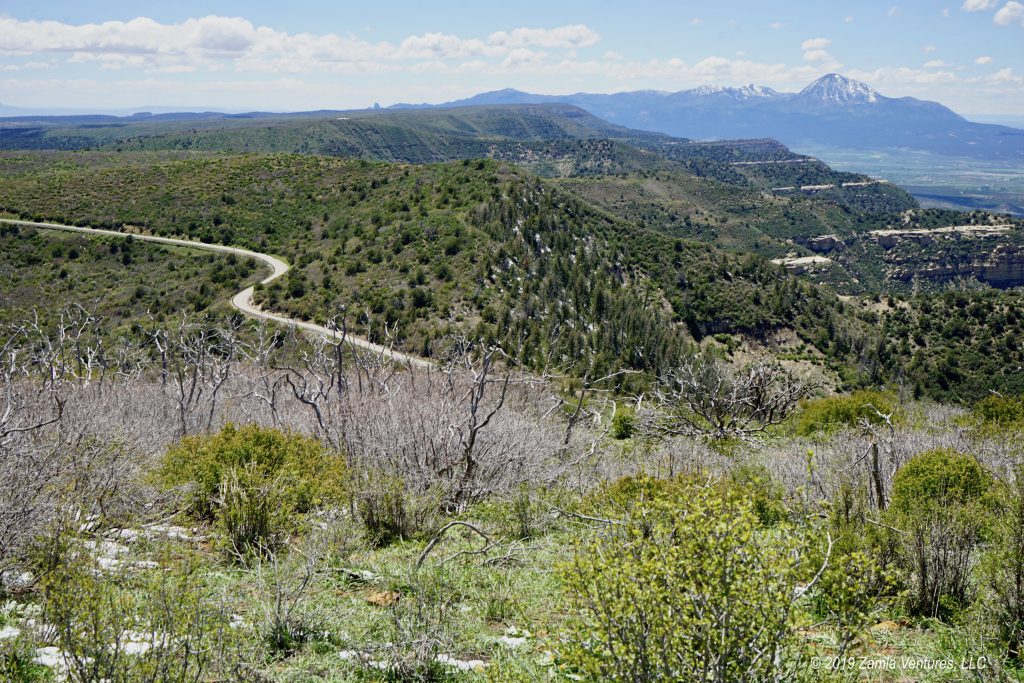
For a relatively brief span within that period of occupation, the Ancestral Puebloans built and lived in elaborate multi-roomed buildings tucked in alcoves in the sandstone cliffs. Depending on the available space in the alcove, the structures could be used by just a few families or up to 100 residents. Built from shaped stones and mortar, and protected from the elements by natural overhangs, these structures have stood up surprisingly well in the centuries since the last residents moved out. The really cool part about Mesa Verde is that visitors can actually go into the cliff dwellings, but only on ranger-led tours. The bad weather (and showing up for tickets two days in advance) helped us secure spots on two separate tours of different cliff dwellings.
First, we toured what is probably most-photographed structure, the Cliff Palace (pictured at the top of the post). This large and gorgeous group of structures has 150 rooms and was probably home to around 100 people. There is a mix of different contours, with both rounded and square towers, and multiple deep kivas. It was our ranger’s first day on the job as a tour guide, and her routine needed a LOT of work, but being able to walk around these ancient and beautifully preserved structures was a real treat.
Our second tour was at Balcony House, touted as the most “adventurous” tour in the park, and it was certainly a challenge. Access to the site is via a modern 32-foot ladder that goes pretty much straight up the side of an exposed cliff. At the end of the tour, the only way to get out of the cliff dwellings and back up to the mesa top parking lot is to (i) crawl on hands and knees through a tiny tunnel that is just 18 inches wide, (ii) climb up two more ladders, and (iii) clamber up a steep cliff using divots in the sandstone as steps while hanging onto (modern) chains. Fortunately our guide on the second tour was a seasoned pro, because she had to talk at least one weepy, panicked visitor up the first ladder. While this tour is obviously not for everyone, we loved having a real hands-on experience of how the cliff dwellers came and went on a daily basis.
We also checked out the Chapin Mesa Archaeological Museum to see the park video, look at artifacts, and get a glimpse of Spruce Tree House located on the side of a cliff across from the museum. One of the greatest mysteries of these sites is why the people suddenly left and moved south into what is now New Mexico, Arizona, and Texas. The time period from the construction of the earliest cliff dwellings to their total abandonment is less than 100 years. Given how much effort went into building the cliff dwellings, there must have been major pressures that caused the people to simply walk away from these sites. One theory is that a period of protracted drought was the cause, but there is little evidence to go on.
In driving around the park, it was remarkable how much of the park shows evidence of burn damage. We learned on one of our tours that Mesa Verde is particularly prone to lightning strikes, and in this arid desert environment there is plenty of tinder available, especially when lightning is often not accompanied by significant rain. Two-thirds of the park has burned since it was first established, and the fire severity is increasing as the climate becomes warmer and drier. We may now be witnessing our own accelerated version of a catastrophic climate change that turns Mesa Verde into a place completely unsuited for human habitation.
Next, we head east a short distance to Durango to get a closer look at these mountains visible from Mesa Verde:
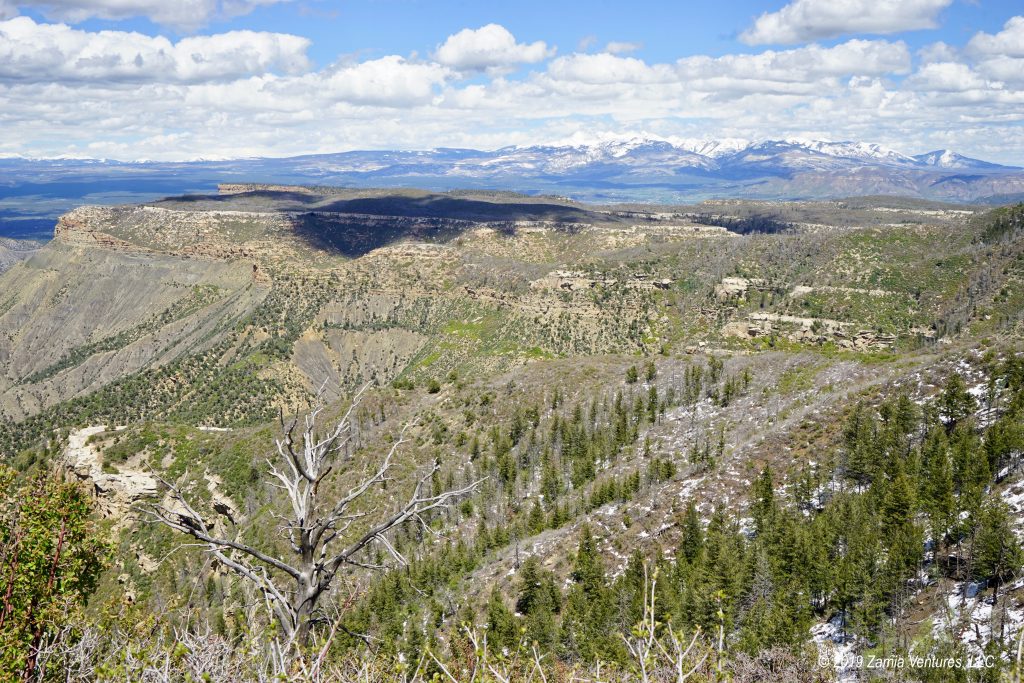
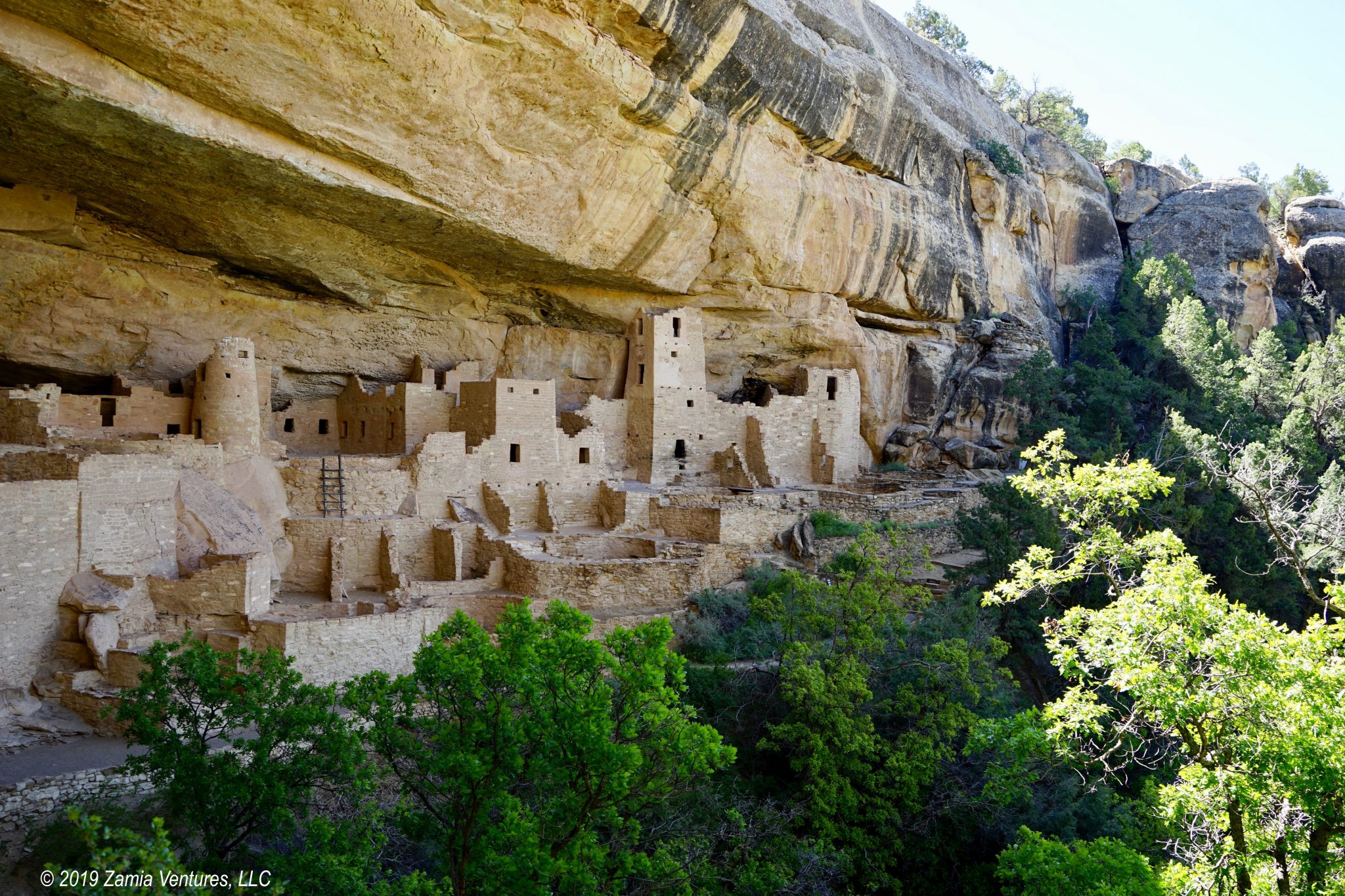
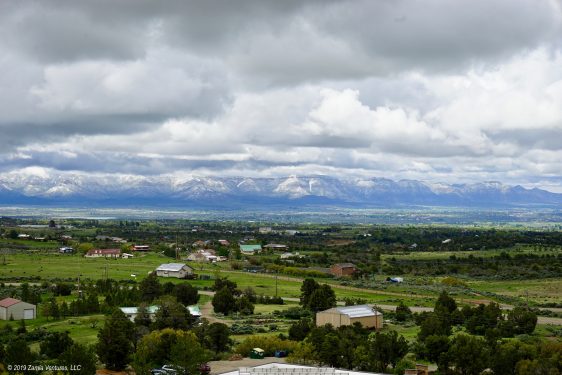



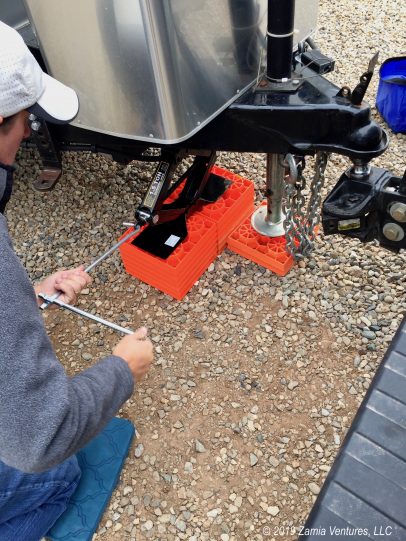
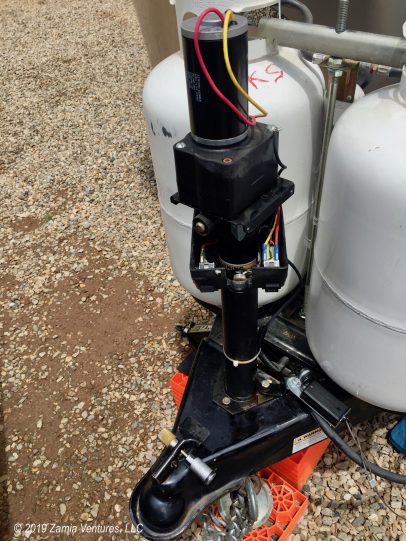
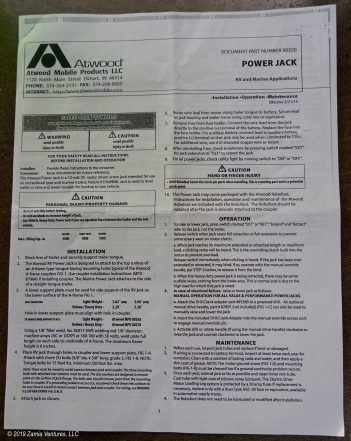
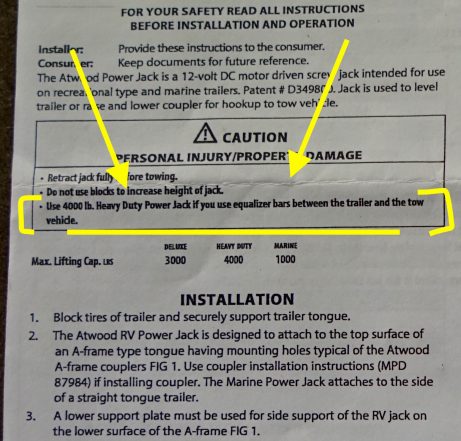
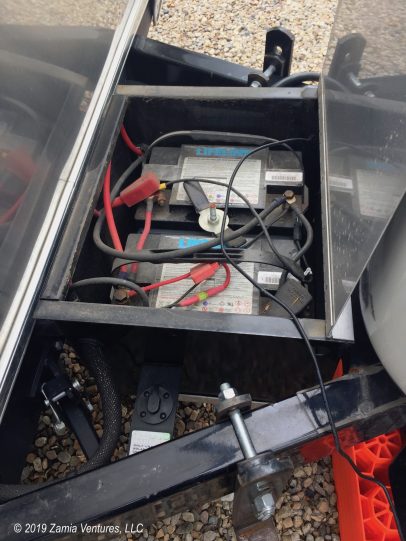
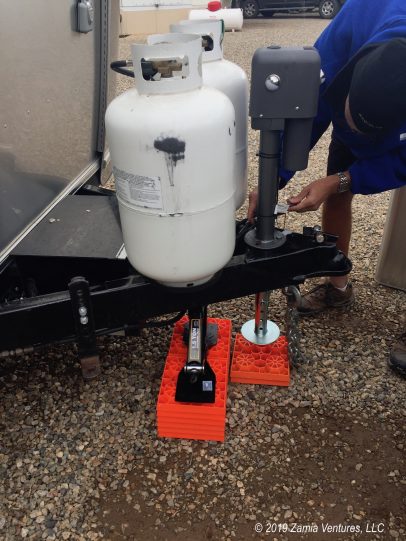
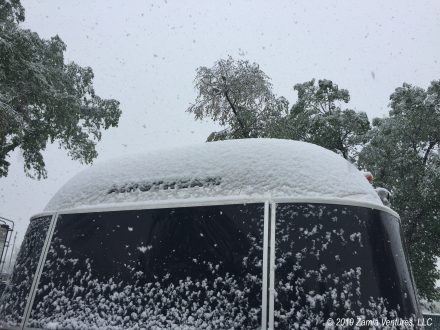
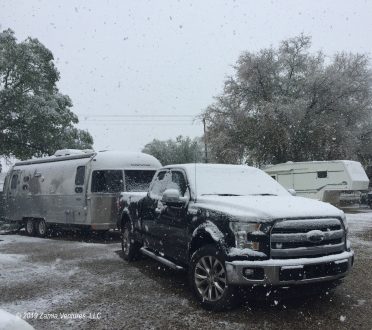
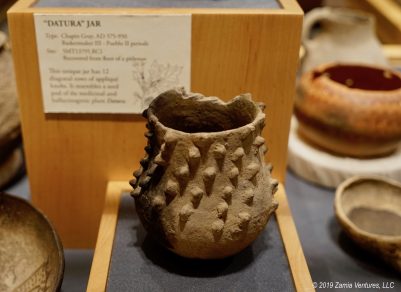
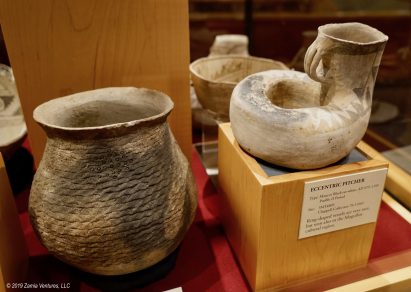
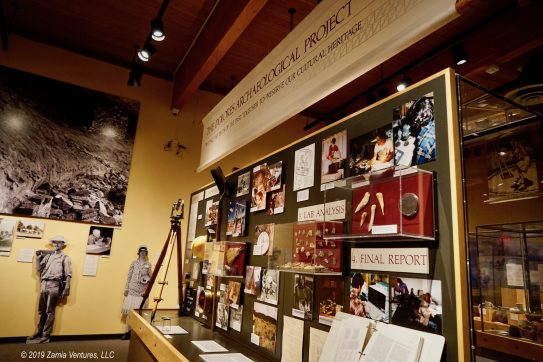
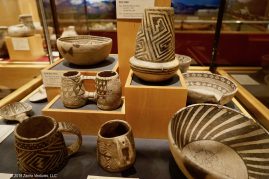
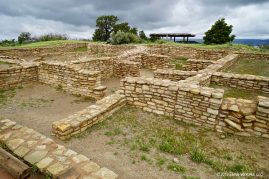
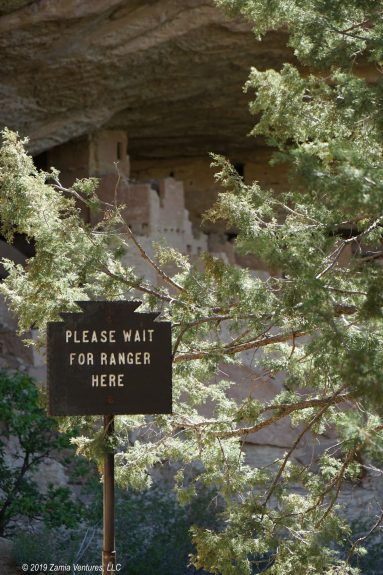
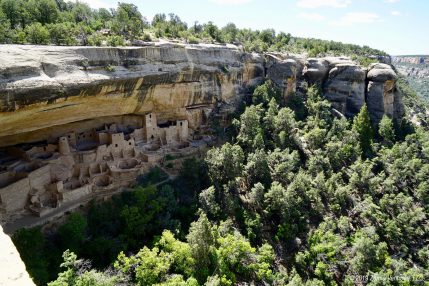
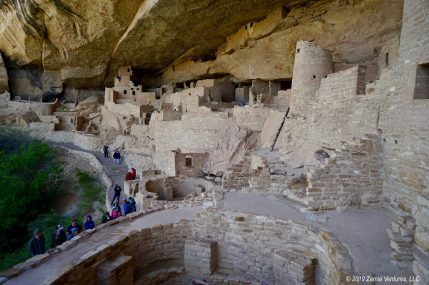
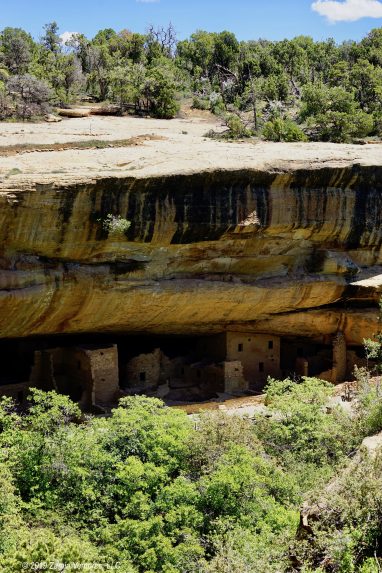
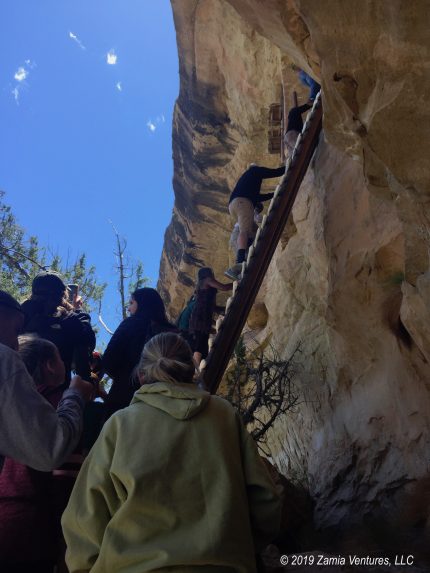
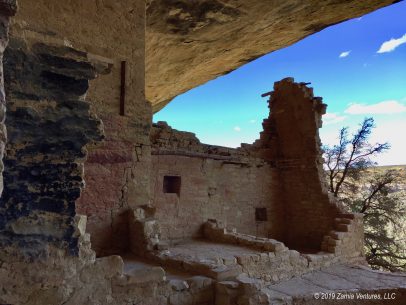
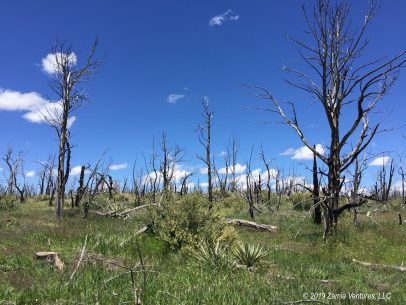
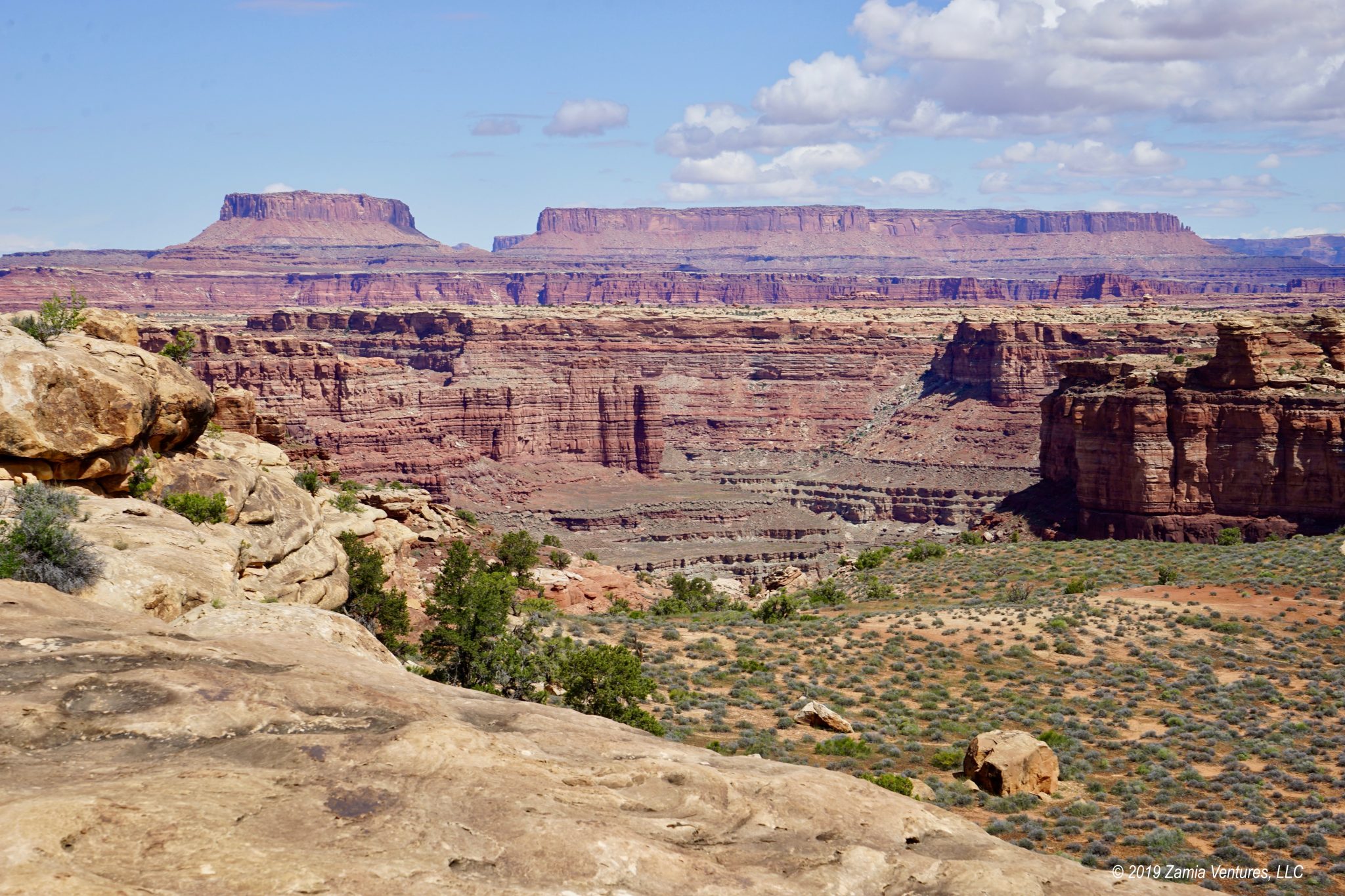
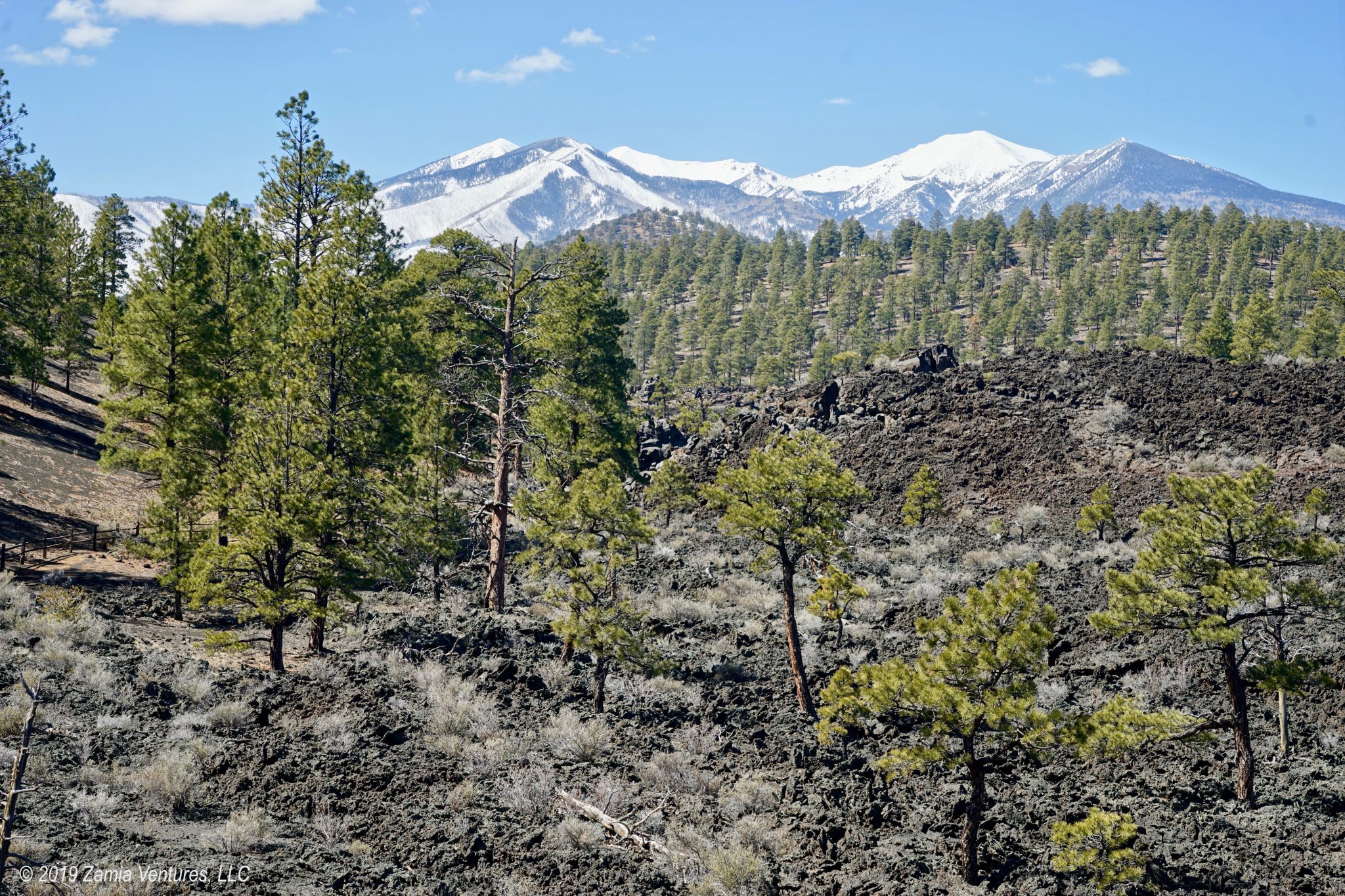
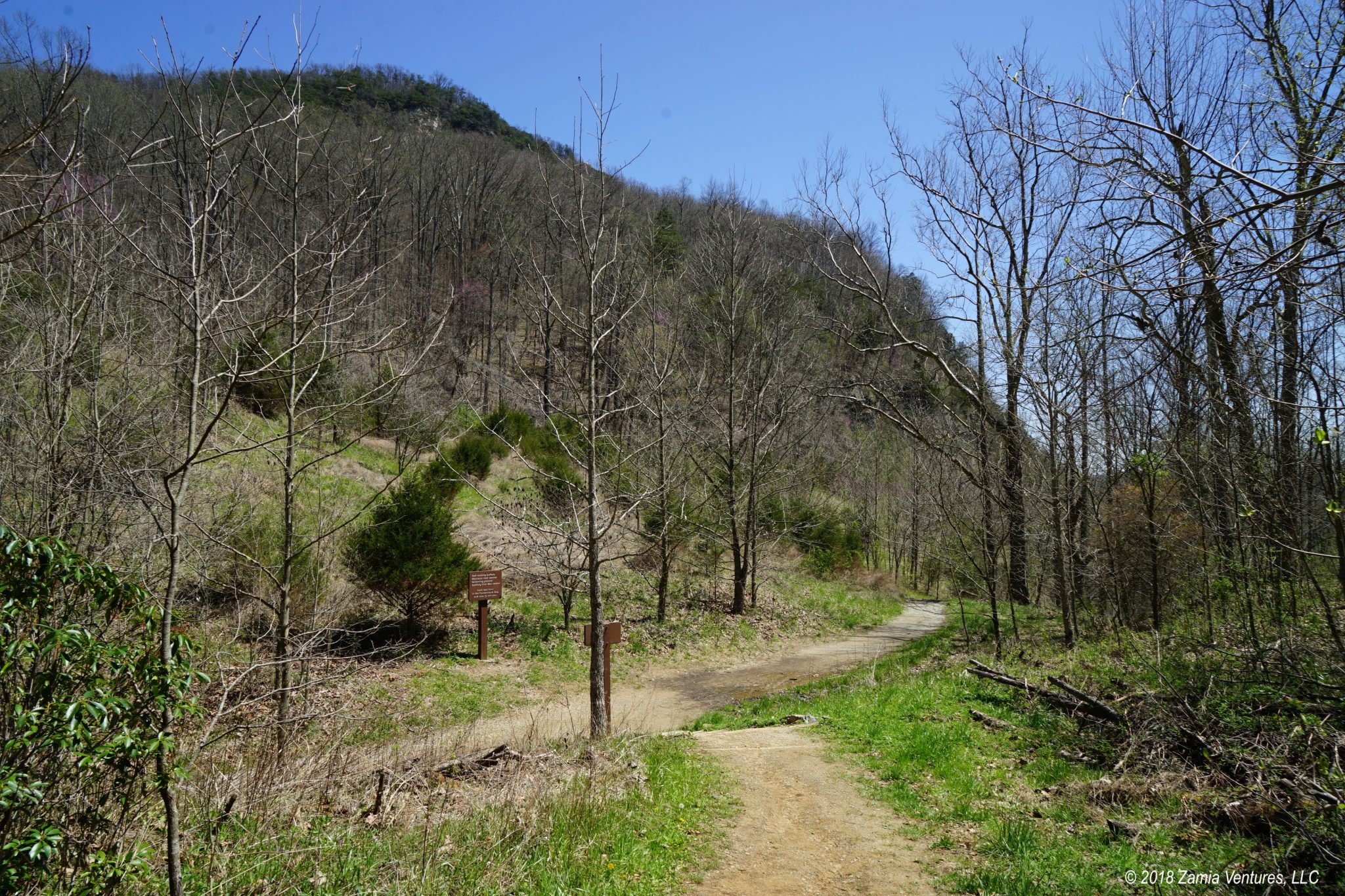
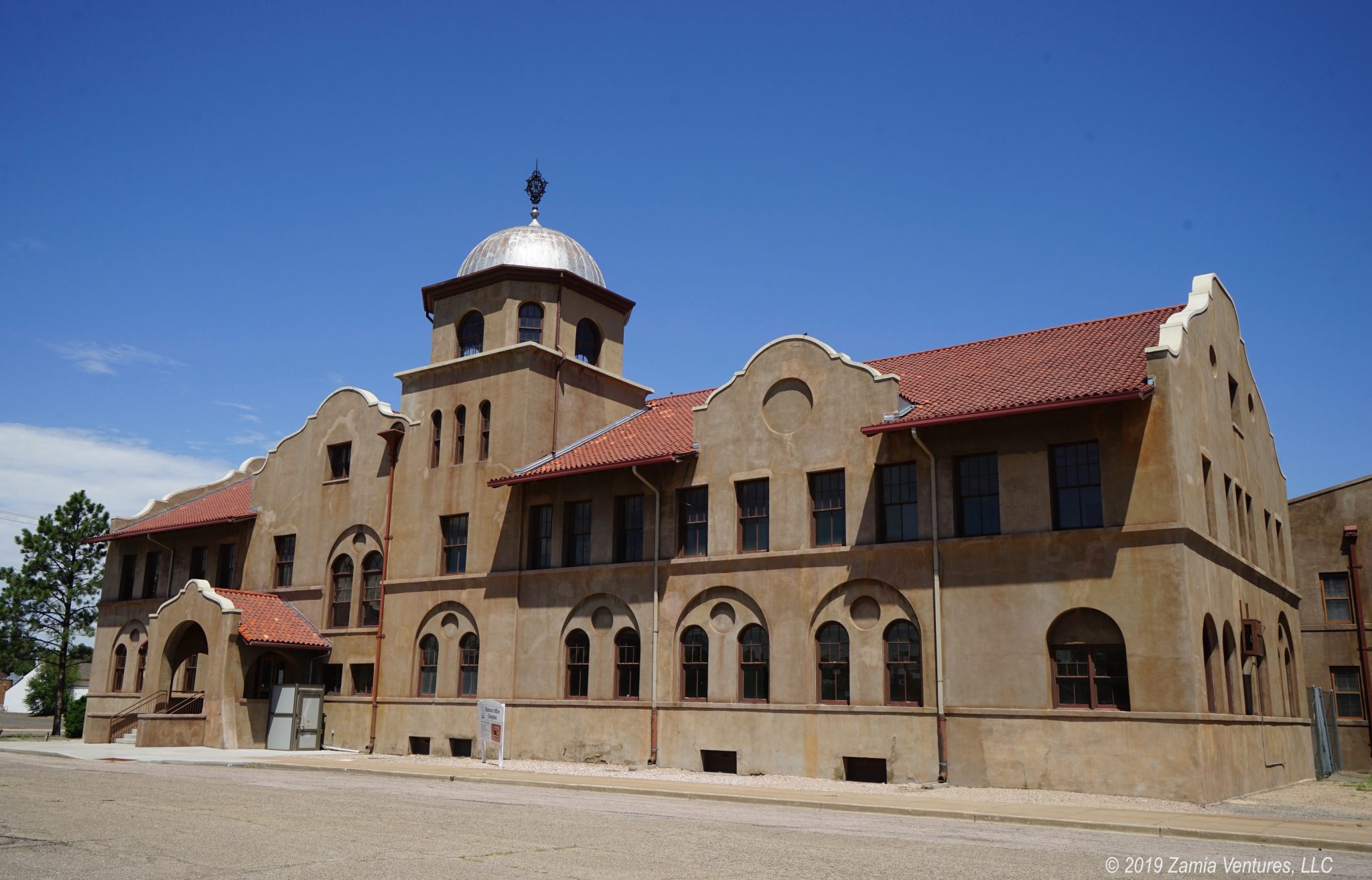
Such good news that Ken is on the mend. I can not imagine him climbing all these ladders and crawling through narrow spaces as you describe your second tour.
Mesa Verde’s cliff dwellings sound like a fascinating place to explore.
I hope you will enjoy the forests and verdant environment of Durango with hopefully warm and clear weather.
The narrow tunnels were tough, especially since Ken is quite a bit taller than the average 13th century Native American. But he was a trooper!
I certainly hope that we are finally going to have full-time summer weather from here on out.
Very glad to hear that Ken is feeling better and you’re both back on your adventure!
Thanks — we are thrilled about this as well.
….On your beer section evaluation/comparison, I also noted the statistical ratio of domestic: imported. 🙂 @Monticello Utah Beer I only noted Corona (sure there were one or two others, but probably owned by one of the big domestic breweries). Walmart had many more ..including ‘staples’ like Heineken.
Look forward to your microbrewery update, since that has been awhile,,, with high caloric intake for Ken’s bulking up.
In Utah the grocery stores can only sell beer up to 4% alcohol by volume, and very few imported beers are that weak. That’s why they are GOOD.
I think we have some breweries in our future in Durango. I agree that it has been too long since we visited one.
Haha, we discovered on our first trip to Utah that the grocery store beers are nasty!! A park ranger told us that the low alcohol content doesn’t keep people from getting hammered—they just drink twice as much.
We also thought the Canyon of the Ancients museum was excellent. I remember being captivated by the “discovery area” too, and after trying my hand at grinding corn, realizing just how overwhelmingly long it would take to make a tortilla. You guys did it all at Mesa Verde! We were probably there 15 years ago and have wanted to return. Your photos and hike descriptions are enticing. (I hope I’m still brave enough for Balcony House!)
As for your electric jack debacle, I can’t imagine anyone having the foresight to read the fine print on that document. Seriously? That is just ridiculous. Glad you got the problem solved. You guys are good at this fulltime traveling thing!
We found a few Utah beers that were OK – the Baba Black Lager from Uinta and the Snap Down IPL from Wasatch Brewing both had enough flavor to compensate for the low alcohol content. Pretty much everything else we tried was little more than water.
It’s amazing what people accomplished in a pre-mechanized world, even things as seemingly simple as tortillas! The cliff dwellings are certainly a testament to the power of group effort, even without mechanical assistance.
The jack debacle was annoying, but the good news is that the fix was simple and the new jack is a huge upgrade. We love it so far, though I never love needing repairs.
You guys really have had a run of crap luck recently. Trust me when I say we are familiar with the concept and, therefore, truly cringe when reading about all these headaches you seem to be enduring. I’m glad you were able to fix the trailer issue and get on with your visit, and I really, seriously, and wholeheartedly hope Mother Nature takes some damned Midol already and gives everyone a break.
We loved Mesa Verde and were bummed we only got to do one hike. The Balcony House tour looks awesome and we would love to do it some day. It’s nice to have a little Indiana Jones thrown into the mix.
When we visited, our tour guide talked about the various fires and the superhuman efforts firefighters made to protect those sites. It concerns me to think how easily it could all be destroyed with more devastating fires on the horizon.
Anyway, glad to hear you are back in the land of rich greenery and tasty beers. Enjoy!
Weirdly, we find the ongoing winter to be more of a bummer than the need for repairs. We’re pretty good with doing repairs, and I guess we are acclimated after hauling the house all over the country on difficult roads. But the persistent cold and snow really gets to us. Here’s hoping spring is finally taking hold! On the nice days that we experienced, the weather has been spectacular — we just need it to last for more than a day or two. At least we have decent beer to console us now….